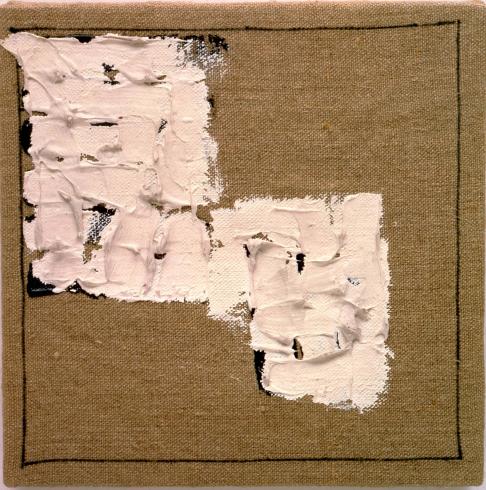Robert Ryman
Variations and Improvisations

Robert Ryman (b. 1930) is an American painter best known for abstract, white-on-white paintings. Ryman was born in Tennessee and began his career as a jazz musician. Soon after arriving in New York in 1952 to pursue his music, he started to paint.
About the Exhibition
Robert Ryman (b. 1930) is an American painter best known for abstract, white-on-white paintings. Ryman was born in Tennessee and began his career as a jazz musician. Soon after arriving in New York in 1952 to pursue his music, he started to paint. A job as a guard at the Museum of Modern Art gave him the opportunity to spend hours at a stretch with paintings, and Ryman learned by looking.
From the beginning, Ryman was uninterested in painting recognizable things or telling stories in his paintings, and he took up the challenge of non-representational painting. When his works have titles, they are deliberately non-associative, assigned purely for identification purposes. His entire career has been devoted to exploring painting as a medium and process. At the beginning, Ryman used a lot of color, curious to see how it worked, but over time he came to work in a predominantly white palette. His preferred format, the square, is similarly neutral.
Ryman is interested in paintings as objects, as extensions of the walls to which they are affixed. For this reason, hanging devices—bolts, tacks, screws, and staples—are often integral to the works. His signature and the date also serve as compositional elements in the paintings. His investigation of painting has led him to use a wide variety of paints and supports—painting in casein, graphite, ink, gouache, oil, and acrylic enamel on canvas, paper, wood, aluminum, steel, and Tyvek. In the way that he applies his mediums, Ryman is as varied as his materials, using bold sweeps of paint, small strokes, drawn grids, and collages.
This exhibition brings together 26 small-scale paintings from private collections. Some of the works have rarely been shown in the United States. Robert Ryman: Variations and Improvisations is the artist’s first solo presentation in the Washington area.
Vesela Sretenović’s book, Robert Ryman: Variations and Improvisations, published by The Phillips Collection, accompanies this exhibition. It includes an interview with the artist and is available in the Museum Shop.



